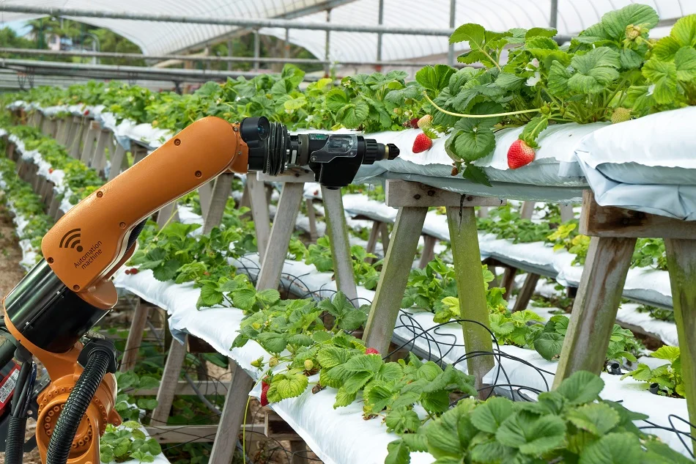Shrimp farming, also known as aquaculture, has become a lucrative industry due to the increasing demand for shrimp in global markets. However, traditional shrimp farming practices face challenges such as disease outbreaks, water quality management, and labor-intensive processes. To overcome these challenges and improve shrimp farming practices, robotics, and automation technologies have emerged as innovative solutions. In this article, we will explore how robotics is revolutionizing precision shrimp farming, the innovations in this field, and the opportunities it presents for the aquaculture industry.
Disease Detection and Management
Disease outbreaks are a major concern in shrimp farming, as they can lead to significant losses. Traditionally, disease detection and management have relied on manual observation, which can be time-consuming and subjective. Robotics has introduced automated systems that can monitor the health of shrimp and detect diseases in real time, enabling early intervention.
One example is the use of underwater drones equipped with cameras and sensors that can monitor water quality parameters, such as temperature, pH, dissolved oxygen, and salinity, which are crucial for shrimp health. These drones can also collect water samples for further analysis, allowing farmers to make data-driven decisions about water quality management.
In addition, robots can be used for non-invasive health assessments of shrimp. For instance, automated imaging systems can analyze shrimp behavior, size, and color to detect signs of stress, disease, or poor nutrition. This information can help farmers identify and isolate infected shrimp, reducing the spread of diseases and minimizing losses.
Feeding Automation
Feeding is a critical aspect of shrimp farming, as it directly affects their growth and survival. Traditional feeding practices involve manual scattering of feed, which can be inefficient and inconsistent. Robotic feeders are being developed to automate the feeding process, ensuring accurate and timely feeding while minimizing waste.
These feeders use sensors and algorithms to determine the optimal feeding rate based on the shrimp’s size, growth rate, and water quality conditions. They can distribute feed evenly across the pond, reducing overfeeding and improving feed conversion efficiency. Some robotic feeders also have built-in cameras that capture images of the shrimp during feeding, allowing farmers to monitor their feeding behavior and adjust feeding strategies accordingly.
Pond Cleaning and Maintenance
Maintaining water quality is crucial in shrimp farming, as it directly affects shrimp health and growth. Traditional pond cleaning practices involve manual labor, which can be labor-intensive and time-consuming. Robotics has introduced automated systems for pond cleaning and maintenance, reducing the reliance on manual labor and improving the efficiency of pond management.
One example is the use of autonomous underwater vehicles (AUVs) that can navigate through the pond and remove debris, excess feed, and accumulated sludge from the bottom. These AUVs are equipped with sensors that can monitor water quality parameters and collect data for analysis. They can also be programmed to follow specific routes and schedules, ensuring thorough cleaning of the pond.
Harvesting and Sorting
Harvesting is a critical and labor-intensive process in shrimp farming. Traditional harvesting practices involve manual labor, which can be time-consuming and costly. Robotics has introduced automated systems for harvesting and sorting shrimp, improving the efficiency and accuracy of the process.
One example is the use of harvesting robots that can autonomously catch and sort shrimp based on size, weight, and other parameters. These robots use vision systems and algorithms to identify and catch shrimp with minimal damage, reducing stress and mortality. They can also be programmed to harvest shrimp at the optimal time, maximizing yield and quality.
Data Collection and Analysis
Data collection and analysis are essential for precision shrimp farming, as they enable farmers to make informed decisions about water quality management, feeding, and disease prevention. Robotics has introduced sensors and imaging systems that can collect data in real time and provide valuable insights for decision-making.
For instance, underwater drones equipped with sensors can collect data on water quality parameters, such as temperature, pH, dissolved oxygen, and salinity, allowing farmers to monitor and manage water quality conditions in real-time. These data can be analyzed to identify trends, patterns, and anomalies, which can help farmers optimize water quality management practices and prevent disease outbreaks.
Remote Monitoring and Control
One of the significant advantages of using robotics in precision shrimp farming is the ability to remotely monitor and control farming operations. Farmers can use robots and automation technologies to monitor various aspects of shrimp farming, such as water quality, feeding, and pond conditions, from a centralized location, reducing the need for a physical presence on the farm.
For example, farmers can use underwater drones or cameras installed in ponds to remotely monitor water quality parameters, shrimp behavior, and feeding activities in real-time. They can also control automated feeders, AUVs, and harvesting robots remotely to adjust feeding rates, pond cleaning schedules, and harvesting activities based on real-time data and farm conditions.

